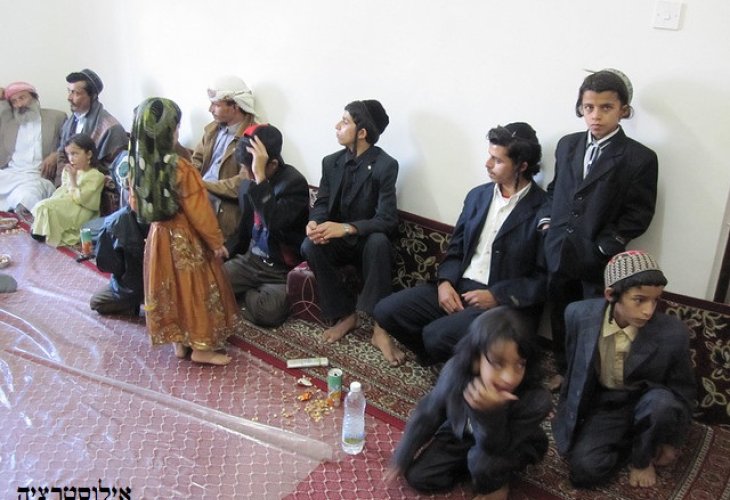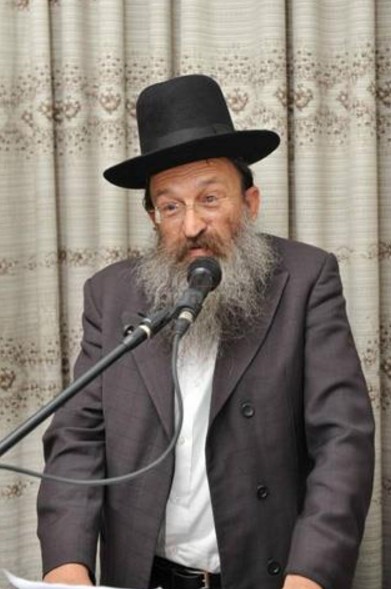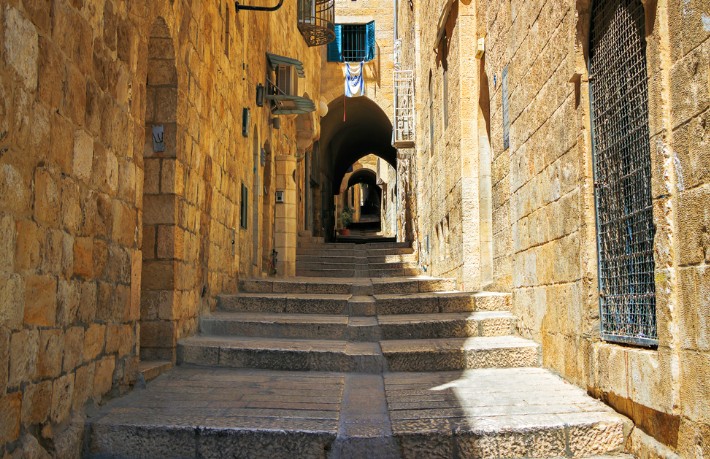Rabbi Yisrael Gliss: "New Discoveries in Jerusalem Almost Every Day"
Rabbi Yisrael Gliss, born and raised in Jerusalem, unveils some of the city's deepest secrets. Discover who found the burial cave of Rabbi Ovadia of Bartenura, why mines were planted near the Western Wall, and who were trapped in Zedekiah's Cave without escape. Stories of Jerusalem.

The Three Weeks, the period between the 17th of Tammuz and the 9th of Av, invites us all to look upon Jerusalem—the eternal Jewish capital. But some, like Rabbi Yisrael Gliss, need no special reminder to keep Jerusalem in their hearts. Rabbi Gliss, who lives in the holy city and prays daily at the Western Wall, is full of stories about the city where he was born and raised, and there is no secret of the city unknown to him. "I am a man of Jerusalem," he states simply.
What does it mean to be a man of Jerusalem, Rabbi Gliss?
"The title 'man of Jerusalem' first expresses my ancestry. I am the tenth generation in Jerusalem; since my ancestors arrived here, my family has never left, and today I am raising my grandchildren here—the twelfth generation in Jerusalem. But beyond ancestry, I am engaged in matters related to Jerusalem 24 hours a day. I write about Jerusalem, research Jerusalem, and talk about Jerusalem. My father also wrote books on Jerusalem, and my grandfather (Rabbi Yisrael Gliss, after whom I am named) edited the 'Hayom' newspaper and the 'Havatzelet' newspaper—both printed in Jerusalem. Jerusalem is essentially the essence of my life."
To the Wall
The most formative moment in Rabbi Gliss's life was the liberation of the Western Wall. "I was a young man then. For years, I had heard from my parents and elders about the difficult feeling that the Old City was not in our hands, and we could not reach the Wall. We all dreamed and longed for the day we could pray near the holy stones. My maternal grandfather—Rabbi Yaakov Yitzchak Kalmanovitz, a famed Breslov chassid, would walk every Friday to the Mukhrar neighborhood. He stood by the fence and prayed the Kabbalat Shabbat prayer towards the Wall. He did not see the Wall and could not reach it, but he felt it might be allowed, and each week, he went again with renewed hope. I, his grandson, regularly accompanied him, and the moment the Western Wall was liberated, he continued as always. For him, it was natural—his wish had come true, and he could connect with the holy stones."
 Rabbi Yisrael Gliss
Rabbi Yisrael GlissRabbi Gliss recalls the liberation of the Wall with emotion. "I was then studying at the Hebron Yeshiva, my father was recruited during the Six-Day War alongside my cousin—Dov Kalmanovitz (now a Jerusalem city council member)—to bury the dead. I also wished to participate, and each night I joined and helped them. It was difficult, strenuous, and unpleasant work, but it was extremely important. On Thursday morning, following the liberation of the Western Wall, my father and Dov Kalmanovitz were asked to collect a pilot whose plane had crashed, and who was killed. They boarded a military vehicle and I accompanied them. After dealing with the pilot, we couldn’t hold back and went on to the Wall. We drove to the Lion’s Gate, and then walked until we reached the Wall. I cannot describe the overwhelming tears and excitement that gripped us. There weren’t many worshippers, mainly soldiers, as others were afraid of the mines in the area, but this sight I will never forget."
Following the Caves
After Shavuot, with the path to the Wall completely open, Rabbi Gliss could not resist exploring the Old City area himself. "Ancient books mention two burial caves near the Western Wall—one is the cave of Rabbi Yehuda HeChassid and the other is the cave of Rabbi Ovadia of Bartenura. I decided to investigate and find these caves. I did extensive fieldwork and understood exactly where the cave area should be. I then reached the spot and paid a few coins to a group of Arabs to show me the exact location. Thus, after much effort, I unearthed both caves. On Rabbi Ovadia's cave was written 'The Cave of Rabbi Ovadia,' and on the other was 'Rabbi Yehuda HeChassid.' The latter was a sensational discovery as the burial method was quite interesting—Rabbi Yehuda HeChassid was buried in the center with his wife and two sons, while his students were buried around him in niches. Most of them died around the same time because he came to Israel with about 500 students, yet a plague in Jerusalem claimed many. Until today, many come to the hillula of Rabbi Ovadia and Rabbi Yehuda HeChassid, thanks to the revelation of their caves."
Rabbi Gliss shares another fascinating memory from those days: "As youngsters," he recalls, "I remember how we would stand on the rooftops in Jerusalem, with our fathers or grandfathers pointing right and left, showing and narrating: 'There is Mount Zion, and there is Mount of Olives, three rows from the top on the left is the grave of Rabbi Yosef Chaim Sonnenfeld, and on the other side is the grave of the Pri Chadash, among others.'
"It’s no wonder that after the Six-Day War, when access to Mount of Olives was opened, my dream felt realized. Suddenly, I could go to all those places I only saw from afar. I took a camera with a film (very rare in those days), and after hours of wandering on the Mount of Olives, I returned home with 45 photos of tombstones. Since then, I have not stopped investigating the mysteries of the Mount of Olives."
 Mount of Olives, Jerusalem (Photo: Shutterstock)
Mount of Olives, Jerusalem (Photo: Shutterstock)One story Rabbi Gliss tells about the Mount of Olives involves Chacham Yosef Chaim, also known as 'the Ben Ish Chai,' who was buried in Baghdad. "Before the Six-Day War, he appeared in a dream to a member of the Chevra Kadisha in Jerusalem and requested: 'Prepare a place for me on the Mount of Olives, I want to come there.' The Jew was puzzled—there was no access to the Mount of Olives, but the following day, the Ben Ish Chai appeared again and explained the exact location where he wished to be buried, close to the Rashash's grave.
To their surprise, that exact week, the Mount of Olives was freed, and the Chevra Kadisha could reach it. Yet, when they found the location described by the Ben Ish Chai, they were amazed because there was another tombstone there. The Chevra Kadisha decided to flip the tombstone, revealing nothing beneath—the plot was empty. Hence, the Ben Ish Chai's remains were brought from Baghdad, and he is now buried on the Mount of Olives, exactly where he requested."
In the Depths of the Cave
If one day you visit the Mount of Olives and turn left, you will discover Zedekiah's Cave, about which Rabbi Gliss also has numerous stories.
"This is the cave where King Zedekiah fled," he explains. "It's a very long cave reaching beneath the Temple Mount. Recently, the cave has undergone renovations, but it was very dark before, and my grandfather—Rabbi Kalmanovitz, along with other Breslov chassidim, often went there to meditate and pray. To ensure they could exit the dark cave, they would tie a rope at the entrance, which they would pull deep into the cave. When they finished their prayers, they followed the rope to find their way out.
"One day," Rabbi Gliss recounts, "an Arab passed by, noticed the tied rope, and cut it. When my grandfather and the chassidim finished their prayers, they tried to pull the rope but discovered, to their horror, that it was drawn to them and didn't help in exiting. Thus, they remained in the cave's depth, crying out loudly. Fortunately, English policemen passed by soon after, entered with flashlights, found them, and rescued them from the cave."
Rabbi Gliss has many more stories about every corner, street, and alley. For years, he has been researching the secrets of Jerusalem, and though it is close to his heart, when we ask him if, in recent years, we've seen it all and if there are no significant new discoveries in Jerusalem, he is horrified.
 (Photo: Shutterstock)
(Photo: Shutterstock)"That's absolutely not true," he insists, "Every day there's something new in Jerusalem. Constant excavations in the city lead to fascinating discoveries. Recently, two caves were revealed at the Menachem Begin Heritage Center, which turned out to be burial caves. Prof. Barkai, overseeing the dig, tasked one of his students to enter one of these caves, warning, 'Don't return until three hours pass.' The student had to dig and dig and eventually found a chest full of jewelry. These jewels, as it turns out, are described in the Book of Jeremiah. It's one of the most exciting discoveries in recent years, and it's not the only one. Continuous excavations around the Western Wall reveal coins, seals, whole and broken vessels, and utensils from the Second Temple period, among many others."
And what would you say to those who feel a bit disconnected from Jerusalem? And perhaps, dare we say, barely visit it?
"I think that since three times a day we pray for the rebuilding of Jerusalem and in the Grace after Meals, we ask: 'Rebuild Jerusalem,' it’s impossible for a Jew who prays and blesses not to visit the holy city at least once a year. But, of course, when you come to Jerusalem, you must take a deep breath, leave behind your cell phone and watch, and come for a whole day.
"There's no shortage of places to tour in the city," he encourages, "and there is so much to see—both in the ancient city and in the flourishing and renewing Jerusalem. Because it's not enough to just cry over the destruction, you must also come to see the revival."

